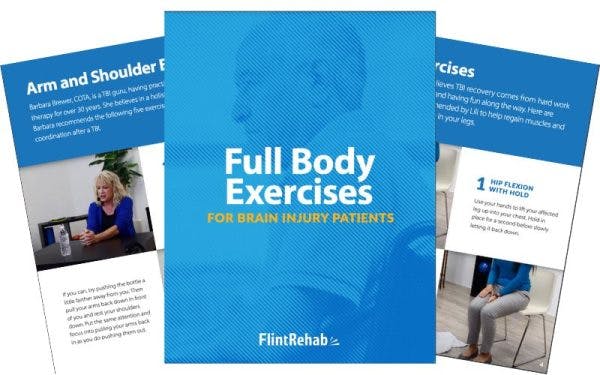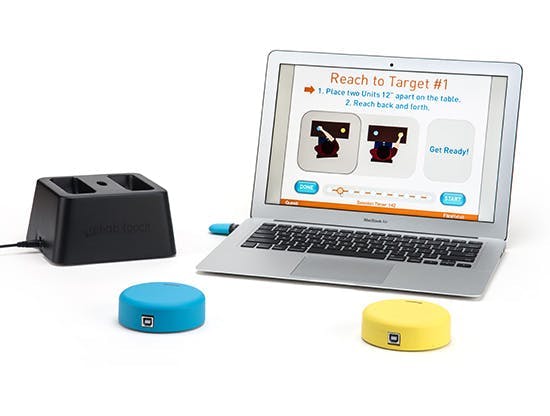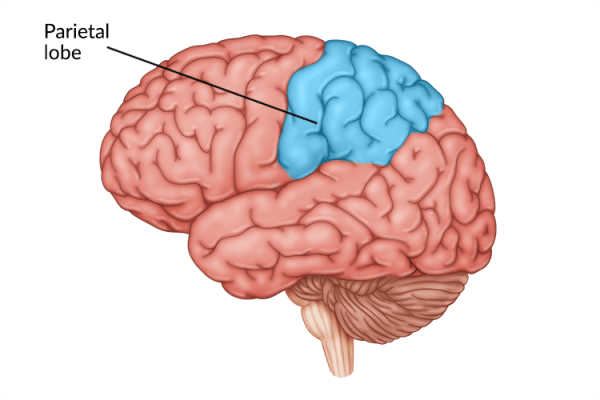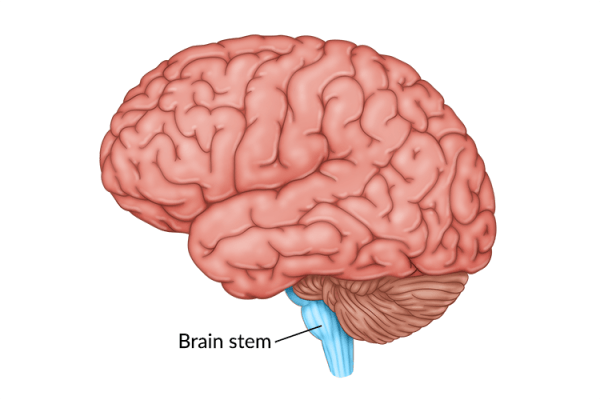Recovering from a stroke or brain injury is a journey that requires patience, consistency, and the right approach. While working with a physical and/or occupational therapist is essential, what you do at home plays a huge role in regaining independence. That’s where rehabilitation tools can make all the difference.
Not all rehab tools are the same. Devices designed for hand and arm recovery work differently than those built for walking, balance, and leg strength. Choosing the right equipment for your specific needs helps you make faster, more meaningful progress.
This guide explains how upper and lower limb recovery differ, which rehab tools are most effective for each, and how to choose the best options to support your goals.
Why Upper and Lower Limb Recovery Require Different Approaches
Stroke and brain injuries can affect movement in different ways depending on which areas of the brain are impacted. Some people experience weakness or stiffness on one side of the body, while others have trouble coordinating movements or maintaining balance. Because the arms and legs serve very different roles in daily life, the tools used to recover function often need to be tailored.
Upper limb recovery focuses on fine motor control and coordination for tasks such as self-care, work, and cooking and cleaning. Activities like buttoning a shirt, typing an email, or pouring a cup of coffee rely on small muscles in the hands and wrists working together with larger movements in the arms and shoulders. Lower limb recovery, on the other hand, emphasizes balance, gait training, and leg strength. Walking, standing from a chair, and climbing stairs require smooth, controlled movement supported by strong lower body muscles.
Understanding these differences helps you choose the right tools for your priorities. A hand therapy device won’t help much with balance, and a gait trainer won’t improve dexterity. Matching the tool to your functional goal sets you up for better results.
How Rehab Tools Support Recovery
Rehabilitation tools do more than provide exercise. They encourage the brain to relearn movement through neuroplasticity. After a stroke or brain injury, the brain can form new neural pathways to compensate for damaged areas, but this process relies on repetition and focused practice.
The right tools make this process more effective by:
- Offering structured exercises that target specific goals
- Encouraging high-repetition task-specific practice
- Providing feedback to track progress and keep you motivated
- Making therapy more engaging so it’s easier to stick with
Consistency drives recovery, and rehab tools help you stay on track by making therapy accessible and rewarding.
Best Rehab Tools for Upper Body Recovery After Stroke or Brain Injury
Recovering movement in the arms and hands after a stroke or brain injury can feel challenging, but the right tools make a big difference. Tools for upper limb recovery should focus on improving control, strength, and coordination in the hands, wrists, elbows, and shoulders.
Because so many daily activities (like eating, dressing, etc.) depend on these movements, therapy should target both fine motor skills and larger functional motions.
Rehab Tools for Hand and Finger Function
Regaining grip strength and finger dexterity is one of the most common goals during recovery. With the right exercises, you can retrain your brain and hands to work together more smoothly.
A few effective tools for improving hand and finger function include:
- MusicGlove: A clinically proven, music-based therapy device that turns repetitive hand exercises into a fun, interactive game (learn more).
- Therapy putty and stress balls: Great for improving flexibility and building grip strength.
- Hand exercisers and grip trainers: Provide progressive resistance to help strengthen the hands and improve coordination.
Because we rely on our hands for so many everyday tasks, tools that allow for frequent, high-repetition practice are especially helpful in regaining independence.
Rehab Tools for Wrist, Elbow, and Forearm Mobility
Stiffness in the wrists and elbows can make even simple activities feel harder than they should. Devices that promote smooth, controlled movements can improve flexibility and comfort:
- Resistance bands: Useful for gentle strengthening and stretching exercises.
- Wrist Mazes: Encourage wrist range of motion and coordination through precise movements.
- Dynamic splints: Provide gentle support for stretching tight muscles and restoring mobility.
When combined with hand therapy, these tools help restore smooth movement for fine motor tasks.
Rehab Tools for Shoulder and Arm Strength
Building strength in the shoulders and arms is just as important as improving dexterity, especially for tasks that involve reaching, lifting, or pushing. Some popular options include:
- Arm bikes: Provide repetitive, low-impact movement to boost endurance and coordination.
- Light dumbbells: Allow for gradual strength training tailored to your ability level.
- Pulley systems: Assist with stretching and guided range-of-motion exercises.
Combining fine motor exercises with larger muscle group training creates a more well-rounded approach, helping you recover both precision and power.
Best Rehab Tools for Lower Body Recovery After Stroke or Brain Injury
Lower limb recovery focuses on rebuilding strength, balance, and coordination. These are all essential for standing, walking, and moving with confidence. Since mobility is closely tied to independence, choosing the right tools for your legs and lower body can have a big impact.
Rehab Tools for Leg Strength
Strong legs support everything from walking to climbing stairs. A few helpful tools include:
- FitMi Home Therapy System: A full-body rehab device with guided lower limb exercises proven to improve mobility up to three times faster than traditional therapy.
- Resistance bands: Versatile for strengthening the hips, thighs, and calves in both seated and standing exercises.
- Ankle weights: Help build endurance and stability during targeted lower body movements.
FitMi is especially effective because it adapts to your ability level and provides interactive feedback, making it easier to stay motivated while completing high-repetition exercises.
Rehab Tools for Balance and Stability
Balance training is just as important as strength training when rebuilding mobility. The right tools can improve coordination and help prevent falls:
- Balance boards or wobble cushions: Strengthen ankle control and engage the core.
- Standing frames: Provide a safe way to practice supported weight-bearing.
- Support rails or parallel bars: Offer stability while relearning proper walking mechanics.
Improving balance doesn’t just make you steadier. It helps you move more freely and confidently which can lead to a greater sense of independence and motivation.
Rehab Tools for Gait Training and Walking Confidence
For many people, walking independently is one of the biggest milestones in recovery. Gait training tools help make that goal achievable:
- NuStep: Improves lower body strength and endurance while simulating the movements involved in walking from a seated position.
- Treadmills with harness support: Allow safe, supported walking practice in therapy clinics.
- Robotic exoskeletons: Provide advanced assistance for those with significant weakness, though these are typically available only in clinical settings.
When combined with strength and balance exercises, gait training helps rebuild natural walking patterns and overall mobility.
When to Combine Upper and Lower Limb Rehab
While it’s common to focus on one area first, combining upper and lower limb rehab can lead to better overall recovery. Most daily activities from preparing a meal to dressing yourself rely on coordinated movement between the arms and legs.
Devices like FitMi make full-body therapy easier by offering guided exercises for multiple muscle groups in one program. Alternating between hand, arm, and leg exercises in a single session can:
- Improve coordination between limbs
- Build overall strength and endurance
- Promote natural, functional movement patterns
By training the body as a whole rather than isolating one area, recovery often feels smoother and more connected — and progress tends to come faster.
How to Choose the Right Rehab Tools
With so many options available, choosing the right tools starts with understanding your goals and lifestyle.
- Set clear priorities: Focus on upper limb devices if regaining independence with dressing or eating is your goal. Choose lower limb tools if walking and balance are the bigger challenges.
- Look for high-repetition potential: Devices like MusicGlove and FitMi are designed to make hundreds of movements per session achievable.
- Choose tools that keep you motivated: Interactive and game-like devices make therapy less of a chore and encourage consistency.
- Consider your home setup: Make sure you have enough space for equipment and that tools fit your environment.
- Consult your therapist: Physical and occupational therapists can recommend devices suited to your needs and ensure you’re using them safely.
A personalized approach works best, and choosing tools you’ll actually use consistently is key.
Getting the Most Out of Your Rehab Tools
Owning the right equipment is only half the equation. To maximize results, focus on building habits that make therapy part of your daily life:
- Plan to practice home exercises at the same time each day to stay consistent
- Track your progress to stay motivated and celebrate milestones
- Start with shorter sessions and increase gradually as your endurance improves
- Be patient — recovery takes time, but every repetition helps strengthen the brain-body connection
Consistency, proper technique, and gradual progression are what drive long-term success.
Conclusion
Choosing the right rehab tools can make a significant difference in recovery after a stroke or brain injury. Upper limb devices like MusicGlove help restore dexterity, strength, and coordination, while lower limb tools like FitMi support balance, mobility, and walking confidence.
For many people, the best results come from combining both upper and lower limb therapy. The most important thing is finding tools that match your goals, keep you engaged, and make high-repetition practice possible. With the right approach and the right equipment, steady progress and greater independence are within reach.









